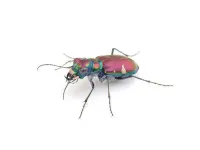CANCER DISPARITIES: AN ONGOING PUBLIC HEALTH CHALLENGE
This is a time of unprecedented progress against cancer. The overall cancer death rate in the U.S. fell by 33% between 1991 and 2020, due in large part to advances in prevention, early detection, and treatment. These advances, however, have not benefited everyone equally.
A long history of racism, segregation, and discrimination against marginalized population groups in the U.S. has led to structural inequities and systemic injustices that negatively impact human health. A lack of diversity in the cancer research and care workforce, which is attributable to the same institutional and societal injustices that limit opportunities for higher education among minoritized communities, also contributes to these health inequities. Many segments of the U.S. population therefore shoulder a disproportionate cancer burden, as outlined in the AACR Cancer Disparities Progress Report 2024:
Key Cancer Disparities Statistics
Although the overall cancer incidence rates among Black and Indigenous populations are lower compared to the White population, Black and Indigenous individuals have the highest overall cancer death rates of all U.S. racial or ethnic groups. This disparity is particularly striking with regards to the Black community: Black men are twice as likely to die from prostate cancer compared to White men. Even though the incidence of breast cancer is similar in Black and White women, Black women have a 40% higher likelihood of dying from it. Black individuals are twice as likely to be diagnosed with and die from multiple myeloma.
American Indian or Alaska Native, Asian and Pacific Islander, and Hispanic people are more than twice as likely to die from stomach cancer compared to White people. These groups also experience higher incidence and mortality rates for liver cancer.
Lung cancer incidence is rising among Asian women who have never smoked.
ZIP code matters: According to the most recent data, residents of nonmetropolitan or rural counties were 38% more likely to be diagnosed with and die from lung cancer, compared to those living in large metropolitan or urban areas.
Sexual and gender minorities also experience notable disparities: Risk of breast cancer is higher among sexual minority women compared to heterosexual women. Transgender individuals are at a 76% higher risk of being diagnosed with advanced-stage lung cancer compared to cisgender individuals. While transgender women appear to be at a 60% lower risk of developing prostate cancer compared to cisgender men, their likelihood of dying from it is nearly double. "The findings of this report offer a deeper dive into the ‘whole person’ as it relates to the areas outside of medicine that contribute to health inequities: ZNA (ZIP code and neighborhood of association), institutional and systemic racism, and situational and physical barriers to access, to name a few,” said Robert A. Winn, MD, FAACR, chair of the AACR Cancer Disparities Progress Report 2024 Steering Committee and director of the Virginia Commonwealth University Massey Comprehensive Cancer Center. “As we continue to look at cancer incidences and outcomes and cross check them against these other factors, while having critical conversations that spur meaningful action within our affected communities, our path forward will become clearer. We have seen tremendous progress against cancer in the last few decades, but we must keep fighting to ensure equal access and improved health care delivery for all people. The key is to keep talking, reporting, and advocating."
UNDERSTANDING THE CAUSES OF CANCER DISPARITIES AND PURSUING HEALTH EQUITY
In addition to identifying the cancer disparities that are experienced by various groups, the AACR Cancer Disparities Progress Report 2024 explores the roots of these inequities and the many complex and interrelated reasons why they persist.
Social drivers of health (SDOH) are central to understanding cancer disparities. SDOH include factors such as education level, income, employment, housing, transportation, and access to healthy food, clean air, water, and health care services, and are major contributors to cancer disparities among racial and ethnic minority groups and medically underserved populations. For example, as noted in the report, an analysis of U.S. cancer deaths in the context of residential segregation caused by decades of redlining found that during 2015–2019, residents of disadvantaged neighborhoods had a 22% higher mortality rate for all cancers combined compared to those living in advantaged neighborhoods not historically subjected to redlining.
Additionally, ancestry-related biological factors—such as differences in genetic variants, epigenetic alterations, immune profiles, and microbiomes—may lead to disparities between different populations. For this reason, the report emphasizes that a comprehensive and integrated approach that accounts for the interplay of environmental exposures, life experiences, and biology in mediating cancer risks is critical to cancer disparities research.
Other major contributing factors to cancer disparities discussed in the report are the lack of diversity in existing cancer genomics datasets; the underrepresentation of minority groups in clinical trials; and the lack of diversity in the Science, Technology, Engineering, Mathematics, and Medicine (STEMM) educational and career pathways, specifically in the cancer research and care workforce.
Encouragingly, various institutions, government entities, and organizations such as AACR are taking steps to address these causes of cancer disparities and achieve health equity for all patients. Below are a few examples highlighted in the report:
Several efforts to collect diverse datasets are underway, including the AACR Project Genomics Evidence Neoplasia Information Exchange® (AACR Project GENIE®), African Cancer Genome Registry, Avanzando Caminos (Leading Pathways) Study, Black Women’s Health Study (BWHS), Multiethnic Cohort Study, Southern Community Cohort Study, and Women’s Circle of Health Study.
Intentional engagement strategies and population health navigation programs have demonstrated success in improving representation in clinical trials. One study found that culturally tailored messaging as well as partnerships with trusted community outreach organizations and patient advocacy groups led to 11% more Black men enrolled in prostate cancer clinical trials. Another study found that a navigation program addressing common barriers to cancer care for medically underserved populations—including food, clothing, housing, transportation, language, health literacy, and social support—increased participation in clinical research among rural, Black, and Hispanic patients.
Many programs and pathways have been established to promote diversity in STEMM, including initiatives led by the American Indian Science and Engineering Society (AISES), the Asian American and Native American Pacific Islander-Serving Institutions Program, the National Action Council for Minorities in Engineering (NACME), the Society for the Advancement of Chicanos/Hispanics and Native Americans in Science (SACNAS), and the United Negro College Fund (UNCF), among others.
Within the National Cancer Institute (NCI), the Center to Reduce Cancer Health Disparities is leading numerous initiatives to train students, researchers, and clinician-scientists from underrepresented communities in cancer and cancer disparities research, thereby increasing diversity across the academic cancer research continuum. PROMISING TRENDS AND THE AACR CALL TO ACTION
Despite the ongoing challenges, some progress has been made against cancer disparities. According to the AACR Cancer Disparities Progress Report 2024:
The disparity in overall cancer mortality between Black and White populations has narrowed significantly over the past three decades, from 33% in 1990 to 11.3% in 2020.
The disparities in cancer-specific mortality rates have also narrowed for: Lung cancer between White and Black men; Cervical cancer between White and Hispanic women; and Stomach cancer between White and Asian and Pacific Islander populations. To accelerate this progress, the AACR Cancer Disparities Progress Report 2024 ends with a Call to Action urging policy makers and other stakeholders committed to eliminating cancer health disparities to:
Provide robust, sustained, and predictable funding increases for U.S. federal agencies and programs that are tasked with reducing cancer disparities. Congress should appropriate at least $51.3 billion for the National Institutes of Health and at least $7.9 billion for NCI in fiscal year 2025.
Support data collection initiatives to reduce cancer disparities.
Increase access and participation in clinical trials.
Prioritize cancer control initiatives and increase screening for early detection and prevention. Congress should appropriate $472.4 million for the Centers for Disease Control and Prevention’s (CDC’s) Division of Cancer Prevention and Control and provide resources to enable CDC’s CORE Health Equity Science and Intervention Strategy. Congress should robustly support the Environmental Protection Agency’s Cancer Moonshot Activities, including the Office of Environmental Justice and External Civil Rights. Implement policies to ensure equitable patient care.
Reduce cancer disparities by building a more diverse and inclusive cancer research and care workforce.
Enact comprehensive legislation to eliminate health inequities. “We are very proud to release the third edition of the AACR Cancer Disparities Progress Report,” said Margaret Foti, PhD, MD (hc), chief executive officer of AACR. “In this era of extraordinary scientific progress against cancer, it is crucial that we ensure that no populations or communities are left behind. Health equity is a fundamental human right and must be a national priority. We hope that the information and recommendations in this report will inspire collaboration among stakeholders and the necessary support from Congress to tackle these complex issues and eliminate cancer disparities once and for all.”
# # #
Resources
For a copy of the report, contact Julia Gunther at julia.gunther@aacr.org or 770-403-7690, or Katie Venango at kathleen.venango@aacr.org or 215-290-5408.
The AACR has made the following graphics available for reporters’ use in stories and on social media. Download them at the links below:
Cover of the AACR Cancer Disparities Progress Report 2024 (JPG)
A Snapshot of US Cancer Disparities in 2024 (JPG)
Why Do US Cancer Disparities Exist? (JPG)
Narrowing Disparity in Overall Cancer Death Rate Between White and Black Populations (JPG)
Approaches to Reduce Cancer Care Disparities (JPG)
Progress Against Cancer in Racial and Ethnic Minority Populations (JPG)
Percentage of Adults Reported to Have Been Treated Unfairly or with Disrespect by Health Care Provider Due to Racial or Ethnic Background (JPG)
Percent Higher Likelihood of Dying Within 5 Years of Colorectal Cancer Diagnosis (JPG)
Increased clinical trial enrollment among Black men with prostate cancer following intentional engagement strategies (JPG)
Black women are twice as likely to be diagnosed with cancer at the first mammogram (JPG)
Video interviews with patients featured in the report are available. Contact Katie Venango for clips.
END






